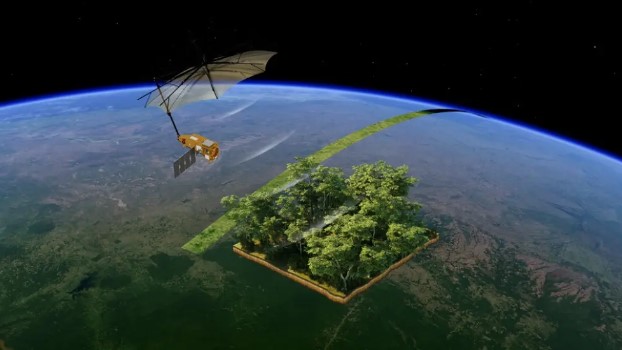Space missions aim to reach the Moon and Mars, study Jupiter’s icy moons, and explore asteroids to determine whether they pose a threat to Earth. In addition to these tasks aimed at unlocking the secrets of the universe, a mission was recently launched to provide information on the state of forests.
This is the European Space Agency’s (ESA) Biomass mission. This initiative aims to document the state of forests and their evolution, expand our understanding of their role in the carbon cycle and climate, deepen our knowledge of habitat loss and its impact on biodiversity, and enable the mapping of subsurface geology in deserts, ice sheet structures, and forest soil topography.
Biomass is the seventh satellite of ESA’s Earth Explorer program, which provides scientific insights into the complex systems of our planet. It is also the first satellite equipped with a P-band aperture synthetic radar, capable of penetrating the interior of forests and measuring their height using interferometric imaging.
Notably, thanks to the P-wave wavelength—approximately 70 centimeters—the radar signal can penetrate the entire forest layer to measure biomass, where tree trunks store most of their carbon.
Simonetta Cheli, ESA’s Director of Earth Observation Programmes, explained: “With biomass, we are able to obtain important new data on the amount of carbon stored in the world’s forests. This information will help fill crucial gaps in our knowledge of the carbon cycle and, ultimately, Earth’s climate system.” Thanks to this mission, ESA scientists will be able to analyze how carbon stocks are changing due to rising temperatures, increasing atmospheric carbon dioxide levels, and human impacts on land use.
Biomass on its way to space
The Vega-C rocket launched on Tuesday, April 29, from the European Spaceport in Kourou, French Guiana, to place the Biomass satellite into orbit at an altitude of 666 kilometers.
According to ESA, “Biomass is functioning perfectly in orbit” and “control teams will carry out the initial launch and in-orbit phase in the coming days, carefully verifying that all systems are working properly.” It goes on to say that “this critical phase requires a series of complex maneuvers to deploy the satellite’s 12-meter-wide mesh reflector, supported by a 7.5-meter-high mast.”
Once this phase is complete, Biomass will be part of the missions coordinated by ESA’s Mission Control Center.
It’s also worth noting that the Biomass mission will last more than five years, during which it will observe eight forest growth cycles. Furthermore, it is divided into two phases:
Spain is involved in this ESA mission
Sener, a private Spanish engineering and technology group, contributed to the mission as part of an international consortium of 50 companies from 20 countries.
Specifically, the company developed the Reception Amplification Subsystem (RAS), an electronic system designed by Biomass to amplify received radar signals and ensure high accuracy in data acquisition. This subsystem includes several critical components, including low-noise filters and amplifiers, specifically designed and tested to meet the demanding mission requirements.
In addition, Sener was also responsible for the design, manufacture, and testing of the assembly fixtures for the Biomass satellite structure. These fixtures include the equipment for vertical transport of the satellite, the assembly and disassembly of the panels, and the installation of the synthetic aperture radar (SAR), the mission’s core research instrument.




